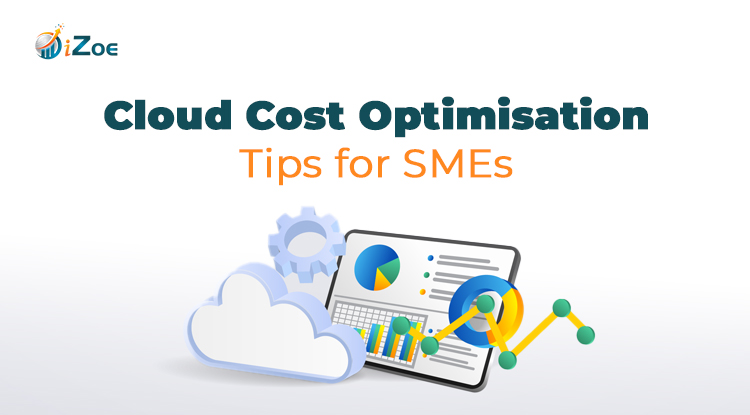Like many SME are gaining from the value proposition of the Cloud, and are enjoying the advantages such as greater flexibility, scalability, and the ability to control costs. The flip side of the story requires that the cloud costs are controlled, else they can skyrocket. The requirement is to do some strategic planning, and SMEs can optimize the spending and benefits to the cloud in a cost-effective manner.
In this guide, we’ll break down practical, easy-to-follow cloud cost optimisation tips designed especially for SMEs.
The Importance of Optimising Cloud Costs for SMEs
Most SMEs work with limited budgets and every rupee or dollar is important. The cloud can allow a business to work imaginative and operational wonders, but many businesses spend money on the cloud without monitoring how it is being spent. Controlling your spending on the cloud can help you:
- Avoid spending on unnecessary items.
- Improve operational effectiveness.
- Adjust spending to ability without suffering a financial loss.
- Realise maximum value from cloud investment.
Let’s consider why so many SMEs spend more than they should on cloud services before we dive into solutions:
Inadequate visibility: Teams don’t always have visibility over what they’re spending.
Overprovisioning: Purchasing more computing power than you really need, “just in case.”
Idle resources: Running servers or storage but not actively utilizing them.
Cloud Cost Optimisation Tips for SME
Check Your Existing Cloud Configuration
Begin by conducting a detailed review of your cloud use. Make a list of services that are critical, underutilized, or entirely redundant. Conduct a quarterly review to determine unneeded expenses and recover wasted resources.
Right-Size Your Resources
Overpaying for large instances is an easy trap to fall into. Assess your workloads and choose the appropriate size of virtual machines, storage, and bandwidth. A majority of cloud providers have inbuilt mechanisms that assist you in achieving the optimal balance.
Leverage Reserved and Spot Instances
If you have fixed workloads, use reserved instances, which can reduce costs by as much as 70% over on-demand pricing. For non-critical or less rigid workloads, spot instances are an excellent cost-saving choice.
Use Auto-Scaling
Auto-scaling makes your business only pay for what it consumes. This feature will automatically scale computing resources based on actual demand in real time, so you do not have to pay for unused capacity during low-traffic times.
Leverage Multi-Cloud and Hybrid Options
Don’t tie yourself to a single provider. By blending services from several vendors or blending private and public clouds, you can pick the most cost-efficient solutions with the benefits of flexibility.
Establish Budgets and Notifications
Establish transparent budgets and receive alerts when spending nears limits. Tools such as AWS Budgets, Google Cloud Billing, and Azure Cost Management provide mechanisms that simplify tracking costs.
Optimize Your Storage
Cloud storage expenses rack up fast if not managed. Utilize tiers of storage, remove aged backups, and compress data where feasible. Archive rarely accessed content to cold storage for long-term cost savings.
Automate Governance
Automation can make time, money, and errors a thing of the past. Implement automated policies for provisioning, scaling, and access management to maintain compliance and prevent human error.
Popular Tools for Cloud Cost Optimisation
| Tool/Service | Provider | Key Features |
| AWS Cost Explorer | AWS | Visualise and manage cloud costs |
| Google Cloud Billing Reports | Customised billing insights | |
| Azure Cost Management | Microsoft | Cost analysis and recommendations |
| CloudHealth | VMware | Multi-cloud cost optimisation |
| Kubecost | Open-source | Kubernetes cost monitoring and optimisation |
Conclusion
Cloud computing can be an enormous growth stimulus for SMEs, but on its own, it can quickly spiral out of control if not managed effectively. By checking over your cloud configuration, scaling intelligently, taking advantage of cost-saving features, and automating functions, your company can reap the rewards of the cloud without breaking the bank.
And if you don’t know which cloud solution is best for your business, don’t worry. At iZoe, we are experts in Enterprise Cloud, Tally on Cloud, and a host of custom cloud solutions aimed at making your operations more efficient and cost-saving. Let us make your cloud experience easier so that you can work on expanding your business.
FAQs
1. What is cloud cost optimisation?
It’s cutting wasteful cloud expenditure while ensuring your systems perform optimally and efficiently.
2. How frequently should SMEs review their cloud usage?
Monthly checks are perfect for keeping on track, a more detailed examination every quarter.
3. Which cloud provider offers most cost savings?
There’s no one-size-fits-all answer—it relies on your workload. AWS, Azure, and Google Cloud all offer competitive pricing models.
4. How does automation save money in the cloud?
Automation dynamically allocates resources according to demand, avoids overspending, and implements company policies without human intervention.
5. Can businesses easily change cloud providers?
Yes, but planning is essential. A multi-cloud or hybrid strategy simplifies changing later.

